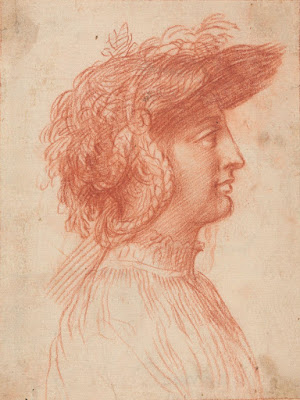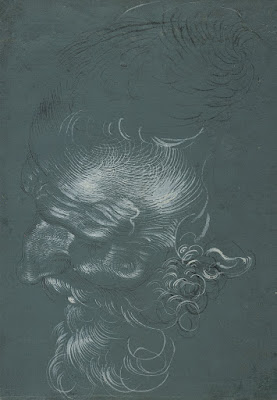 |
| workshop of Andrea della Robbia Head of a Youth ca. 1480 enameled terracotta Detroit Institute of Arts |
 |
| Anonymous Italian Artist Bust of an Old Man of the Capponi Family ca. 1450-1500 terracotta (based on death mask) Victoria & Albert Museum, London |
 |
| Anonymous Italian Artist Head of a Saint 15th century marble Scottish National Gallery, Edinburgh |
 |
| Michel Erhart Head of a Young Man ca. 1480 limewood Victoria & Albert Museum, London |
 |
| attributed to Bartolomeo Bellano Head of a Youth ca. 1456-70 bronze Detroit Institute of Arts |
 |
| Anonymous Italian Artist Young Man with Elaborate Headgear ca. 1500 drawing National Gallery of Norway, Oslo |
 |
| Pinturicchio Head of a Youth ca. 1485 drawing National Gallery of Art, Washington DC |
 |
| Hans Holbein the Elder Portrait of an Unknown Woman ca. 1508 drawing National Gallery of Art, Washington DC |
 |
| Hans Baldung Head of an Apostle ca. 1520 drawing Statens Museum for Kunst, Copenhagen |
 |
| Sandro Botticelli Sheet of Studies ca. 1480-85 drawing National Gallery of Art, Washington DC |
 |
| Baldassare d'Este Francesco II Gonzaga, 4th Marquis of Mantua ca. 1474-80 tempera on panel National Gallery of Art, Washington DC |
 |
| Albrecht Dürer Head of a Young Man 1503 drawing Clark Art Institute, Williamstown, Massachusetts |
 |
| Anonymous Italian Artist Head of a Monk ca. 1475 drawing Morgan Library, New York |
 |
| Giovanni Agostino da Lodi Head of a Young Man ca. 1500 drawing Harvard Art Museums |
 |
| Ercole de' Roberti Portrait of Ginevra Bentivoglio ca. 1474-77 tempera on panel National Gallery of Art, Washington DC |
 |
| Jacopo Ripanda Two Grotesque Heads ca. 1500 drawing Morgan Library, New York |
"It took Juliet at least fifteen minutes to rearrange the library for the Literary Club. Though it was after school hours there was always some sixth-former at a table in a corner who looked as though she'd been there for a year, slumped over in an irremediable swamp of paper and chemistry textbooks. Juliet tried to persuade them all to leave so that she wouldn't feel self-conscious if the discussion grew heated. There was a study room assigned for the purpose, she told them one after another, and each time they would sigh and slam shut their books and heave themselves resentfully to their feet. It was always the scientists who were the worst. They had a sort of maleness about them, an aura of election. Once or twice they had asked why the Literary Club couldn't move to the study room instead. Juliet informed them that exclusive use of the library on the last Friday of the month was and always had been a perquisite of the Literary Club. If they wanted to stay here, they'd have to join. She gloried, a little, in this part of the fifteen minutes. She felt she was in a sense on the front line, defending art from the barbarian forces of rationality."
– Rachel Cusk, from the novel Arlington Park (2006)